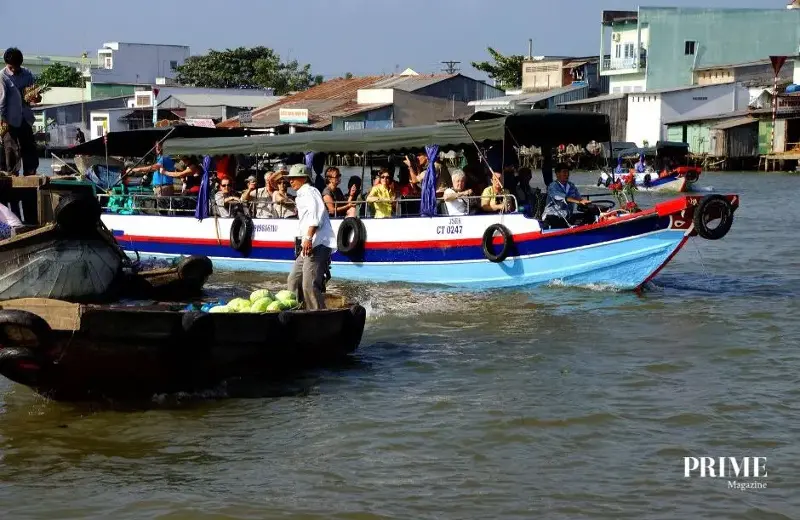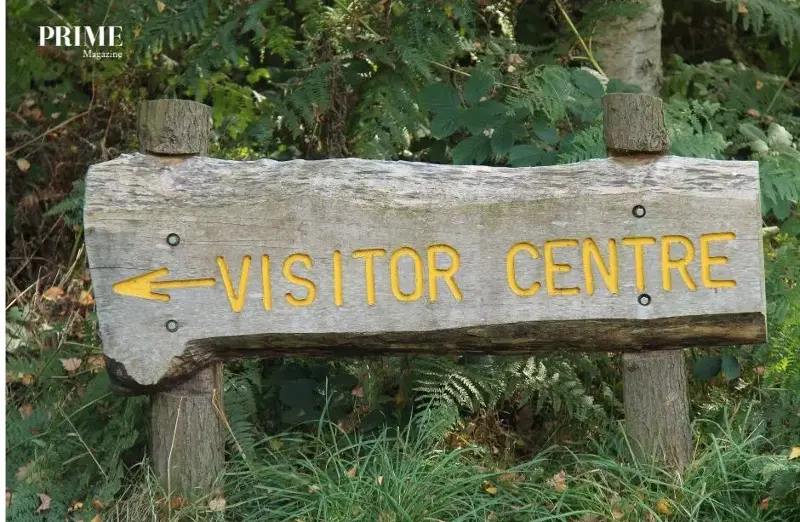Part 7 – Final Chapter of the Prime.sg Ecotourism Series

Serengeti Sunset
After visiting the Galápagos Islands, Gunung Mulu National Park, Costa Rica, New Zealand and Tanzania, one key question remains: how do you choose an ecotourism destination that genuinely protects nature and supports local communities? Understanding how to choose an ecotourism destination is essential, especially as more places label themselves “eco-friendly” without meaningful action behind the term. This final chapter offers a simple, practical framework to guide you toward travel choices that create a positive impact.
Why Knowing How to Choose an Ecotourism Destination Matters

Tourists with a Tour Guide
Your decision about where to travel influences wildlife, ecosystems, cultural heritage and community livelihoods. When travellers intentionally select responsible destinations, they help:
-
protect biodiversity
-
reduce environmental pressure
-
support local and Indigenous communities
-
promote cultural preservation
-
encourage governments to prioritise sustainability
-
inspire more ethical travel practices
Because of this, understanding how to choose an ecotourism destination empowers you to make choices that benefit both the planet and the people who call these landscapes home.
1. Look for Strong Conservation Efforts

Yellowstone National Park Ranger
One of the clearest indicators of a genuine eco-destination is its commitment to protecting nature. As you evaluate how to choose an ecotourism destination, look for places that:
-
preserve large protected areas
-
limit visitor numbers
-
enforce science-based wildlife policies
-
run rehabilitation initiatives
-
publish conservation updates

Park Ranger Walking Through Lush Forest Trail Surrounded by Fern
Destinations like the Galápagos Islands and Serengeti National Park show how strong regulations safeguard fragile ecosystems. Although the rules may feel strict at first, they ensure long-term protection.
2. Choose Destinations That Empower Local Communities

Artisans Making Handcrafts
Sustainable tourism thrives when local people benefit directly. Therefore, when deciding how to choose an ecotourism destination, prioritise places where communities lead or co-manage tourism activities.
Positive signs include:
-
locally owned eco-lodges
-
Indigenous-led experiences
-
fair employment practices
-
reinvestment into schools, culture or conservation
-
community training and guide development
Gunung Mulu’s community partnerships and Costa Rica’s eco-lodges show how tourism can uplift families while protecting nature.
3. Consider Eco-Certifications and Sustainability Standards

ECO friendly stamp on white background
Eco-certifications provide reassurance that a destination follows recognised sustainability practices. When learning how to choose an ecotourism destination, look for trusted labels such as:
-
GSTC Certification
-
EarthCheck
-
Green Globe
-
Rainforest Alliance
-
Qualmark Sustainable Tourism (New Zealand)
While certification is not everything, it shows commitment and transparency.
4. Evaluate Visitor Management Policies

Gate Closes At 10:30 Pm Sign At A Beach
A responsible eco-destination manages tourism thoughtfully to avoid overcrowding and environmental damage. Key indicators include:
-
guided tours for sensitive areas
-
timed entry or visitor quotas
-
clear environmental guidelines
-
marked trails or boardwalks
-
strong waste-management systems
Gunung Mulu National Park, for instance, uses elevated walkways and timed cave access to protect ecosystems while offering safe, enjoyable experiences.

Friendly Park Ranger Helping Campers
5. Assess Accessibility and Carbon Impact

Tourists Visit the Floating Market
Travel distance matters too. Shorter trips produce a smaller carbon footprint, which is helpful when choosing how to choose an ecotourism destination from Singapore. Nearby regions — such as Borneo, Indonesia or Thailand — offer breathtaking biodiversity with minimal flight time.
However, long-haul destinations like Tanzania or Costa Rica still make sense when they:
-
protect ecosystems effectively
-
support community livelihoods
-
offer high educational value
-
reinvest tourism revenue into conservation
The key is balancing meaningful impact with responsible travel.
6. Look for Clear Educational Value

Visitor Centre.
A true ecotourism experience helps visitors understand ecosystems and cultural heritage. Therefore, when considering how to choose an ecotourism destination, look for places with:
-
knowledgeable naturalist guides
-
informative visitor centres
-
interpretive trails
-
cultural storytelling
-
conservation workshops
-
hands-on learning opportunities
Learning deepens your appreciation and encourages responsible behaviour long after you return home.
7. Choose Low-Impact, Nature-Friendly Activities

Birdwatcher
Activities should support ecosystem health — not damage it. As you reflect on how to choose an ecotourism destination, prioritise places that offer:
-
ethical wildlife viewing
-
guided nature hikes
-
kayaking or canoeing
-
stargazing and birdwatching
-
organic farm experiences
-
cultural immersion
-
conservation volunteering
Avoid destinations that promote captive wildlife interactions, unregulated tours or high-impact motorised activities.
8. Use Traveller Reviews as Supporting Evidence

Feedback
Reviews help reveal real-world environmental practices. Look for mentions of:
-
cleanliness and waste management
-
respectful local guides
-
ethical wildlife encounters
-
environmental briefings
-
clear sustainability policies
Be cautious with vague, unverified claims like “eco-friendly” or “green hotel.”
9. Match Your Travel Style to the Destination

Match yout travel style to the destination
Finally, part of knowing how to choose an ecotourism destination is recognising your own preferences. Every eco-destination offers something different:
-
Adventure travellers: New Zealand’s alpine trails, Mulu’s Pinnacles, Tanzania’s rugged safaris
-
Wildlife lovers: Galápagos wildlife encounters, Serengeti’s Great Migration, Costa Rica’s rainforests
-
Families: Monteverde canopy walks, Rotorua geothermal parks
-
Relaxed travellers: community eco-lodges, gentle forest trails
Choose a destination that excites you while supporting sustainability.
Your Choice Shapes the Future

eco-friendly concept
Every traveller plays a part in the future of ecotourism. When you understand how to choose an ecotourism destination, you reward destinations that protect nature and uplift local communities.
Your choices help safeguard:
-
endangered wildlife
-
ancient forests
-
fragile coral reefs
-
mountains and waterways
-
Indigenous heritage
-
local livelihoods
By travelling responsibly, you help keep these ecosystems alive for future generations — and that may be the most meaningful journey of all.

Tourists checking map
